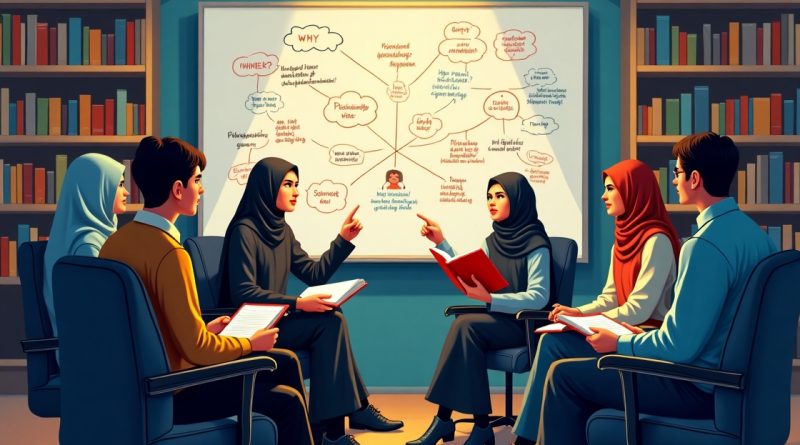Forming Critical Thinking Among Student Activists
By Dr. Abdul Wadud Nafis, LC., MEI
In the history of the nation’s journey, students have always played an important role as agents of change. They are not only the moral voice of society but also the driving force behind social-political transformation. However, in today’s era of information overload and the rapid flow of social media, that role demands more than just enthusiasm — it requires sharp critical thinking skills rooted in scientific values and ethics.
Critical thinking is not just about rejecting or challenging something, but how an activist is able to distinguish facts from opinions, analyze issues clearly, and formulate solutions that are sound and responsible. Without this ability, activism can fall into agitation without direction, or become an echo of dominant narratives that do not always side with the truth.
Therefore, building a critical mindset among student activists is not a choice but a necessity. This is not only to strengthen movements but also to uphold the intellectual dignity of the campus as a field of free thought. This article will elaborate on practical and philosophical strategies to cultivate a culture of critical thinking among students — so that movements are not only loud but also insightful and liberating.
Below are strategies for forming critical thinking among student activists that can be applied systematically and sustainably:
1. Building a Foundation of Knowledge and Intellectual Awareness
Critical Literacy: Develop the habit of reading philosophy, politics, economics, and history books that train analytical skills.
Thematic Discussions: Hold regular forums to discuss current issues in depth, not just reactively.
Logical Thinking Training: Practice logical reasoning through debates, opinion writing, and argumentation exercises.
2. Encouraging Healthy Skepticism
Teach students not to accept raw information at face value, but to evaluate sources, contexts, and motives behind the information.
Train them to ask “why” and “how” about every policy, news, or social issue.
3. Synergizing Action with Reflection
Encourage every field action to be preceded and followed by study. Post-action reflection is important for evaluation and deeper understanding.
Critical thinking applies not only toward opponents but also toward the movement itself — this builds intellectual integrity.
4. Integrating Ethical Values and Empathy
Train critical thinking that is not only logical but also ethical and aligned with values of justice and humanity.
Critical activists should not be easily swayed by fanaticism or hatred.
5. Mentoring by Campus Intellectuals
Involve lecturers and alumni who possess critical thinking capacity as mentors for activist development.
Form cross-cohort and cross-faculty study groups.
6. Technology and Media Literacy
Teach digital literacy and discourse analysis of social media, news, and digital content.
Build habits of verifying information before spreading it.
7. Building a Culture of Writing and Publication
Critical activists must be able to write their thoughts systematically. Encourage publication in campus media, journals, blogs, or mass media.
Conclusion
Critical thinking is the lifeblood of civilized and meaningful activism. Amid the increasingly complex dynamics of the times, student activists are challenged not only to speak loudly but also to analyze intelligently and make wise decisions. With the right strategies, campuses will not only produce orators but also thinkers and reformers capable of lighting the lantern of change for society and the nation.
References
Brookfield, S. D. (2012). Teaching for Critical Thinking: Tools and Techniques to Help Students Question Their Assumptions. San Francisco: Jossey-Bass.
Ennis, R. H. (2011). Critical Thinking: Reflection and Perspective Part I. Inquiry: Critical Thinking Across the Disciplines, 26(1), 4–18.
Freire, P. (2005). Pedagogy of the Oppressed (Trans. Utomo Dananjaya). Jakarta: LP3ES.
Ministry of Education and Culture of Indonesia

